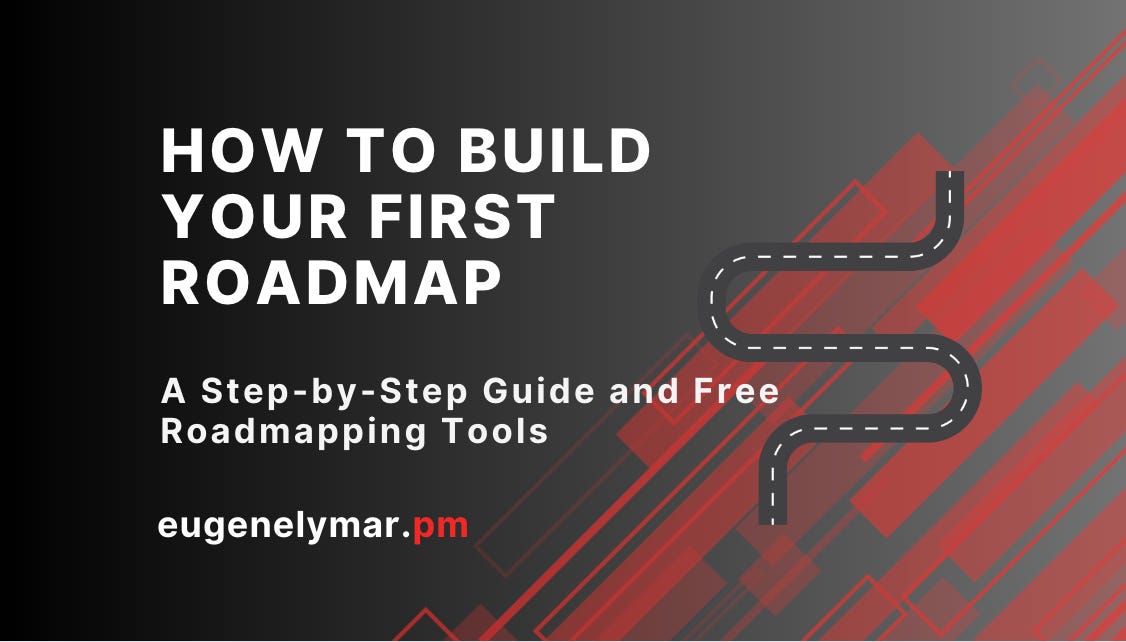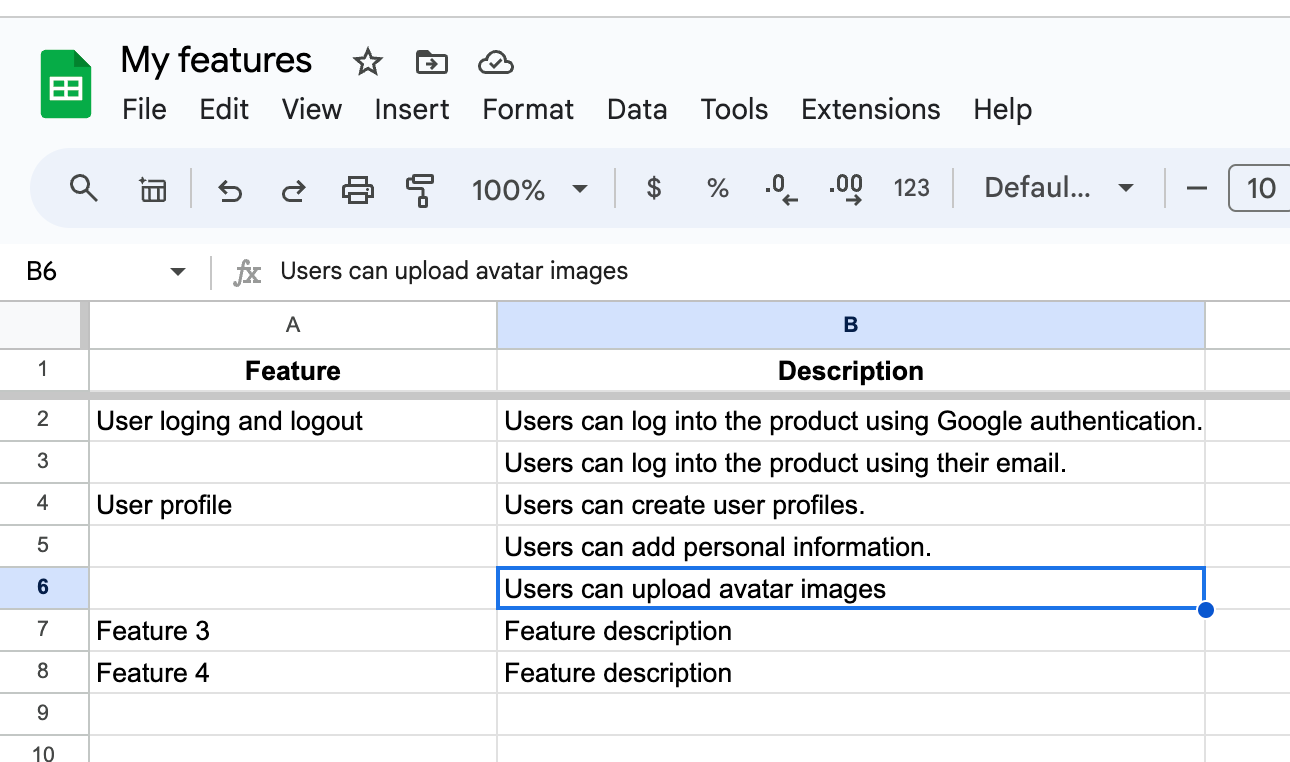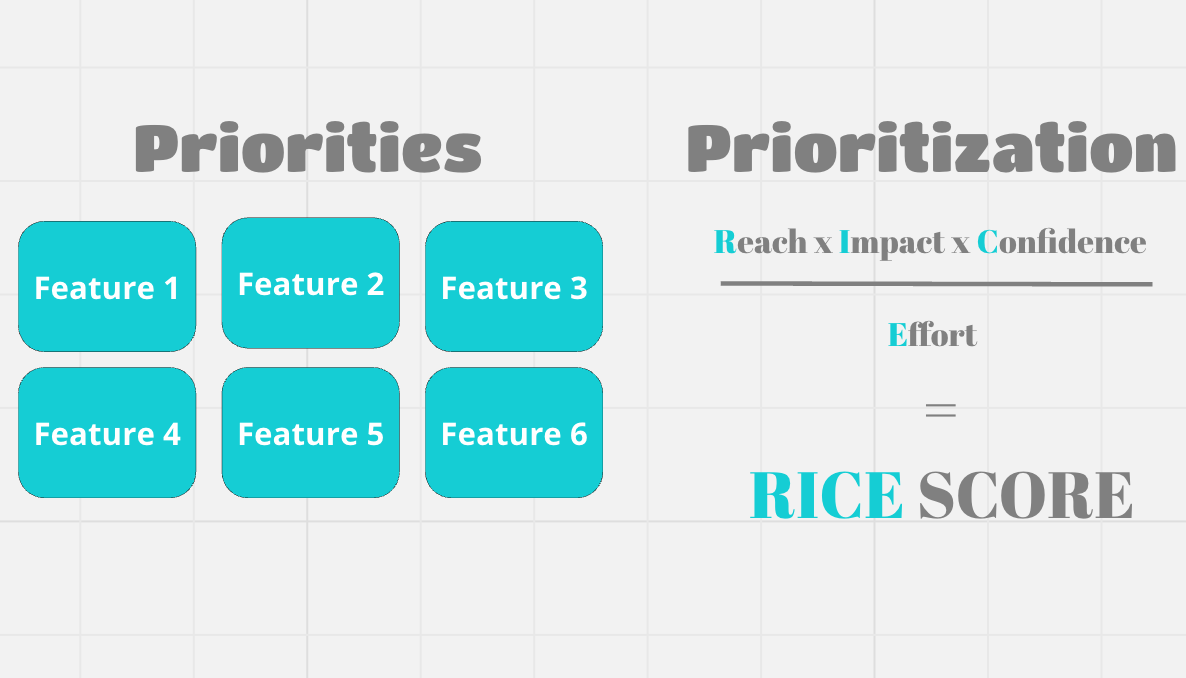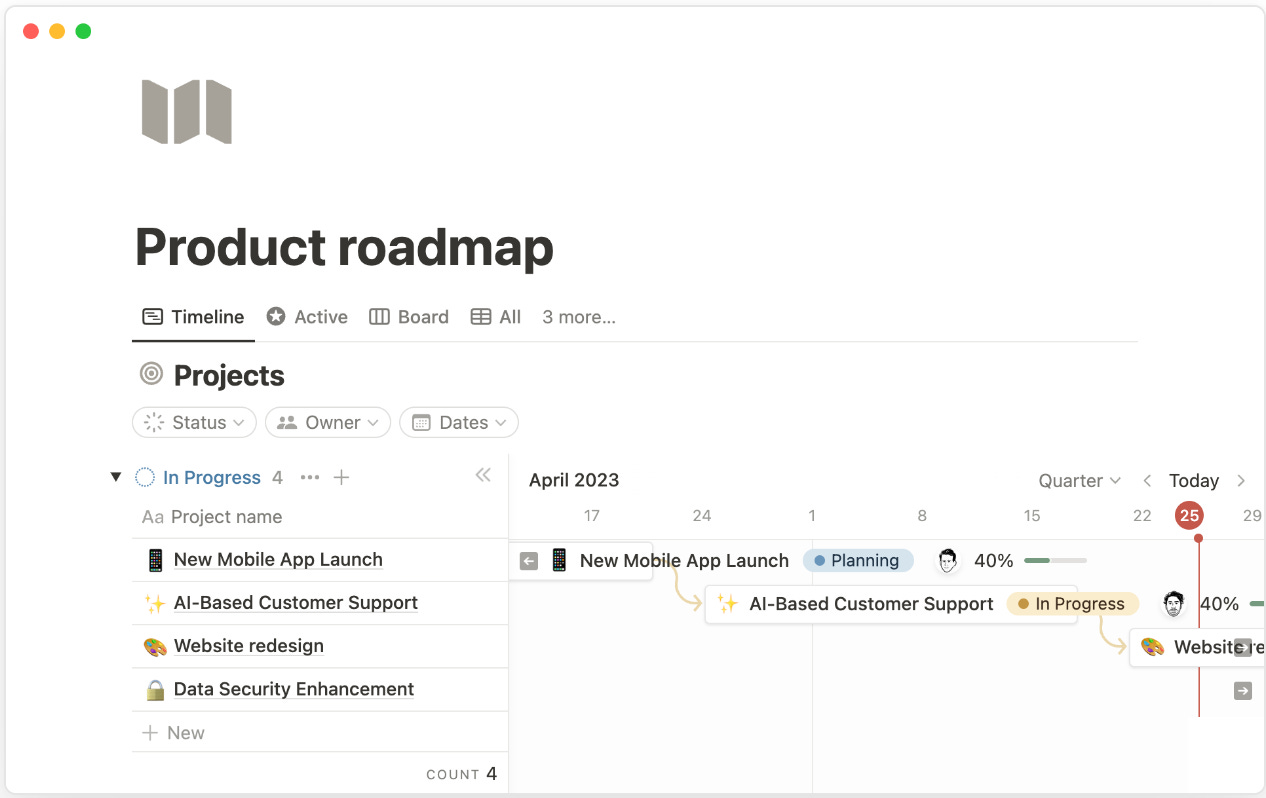How to Build Your First Roadmap - A Step-by-Step Guide and Free Roadmapping Tools
Today, I want to talk about roadmaps as a powerful tool for product managers. A roadmap is a visual plan for the product features that are planned be developed in a certain period of time. It outlines the product’s direction and priorities and serves as a guiding point for different key stakeholders - CEO, CTO, investors, product leads even your development team.
The product manager is the one responsible for building and maintaining product roadmap. And every product manager faces the situation when they build their first roadmap, which may be a frustrating and intimidating process, especially in the situation of uncertainty.
Don’t worry, I will guide you through the process of building your first roadmap from scratch. You will not be alone in your journey.
Step 1: Get Input from Product Vision and Product Strategy
Every product begins with a product vision and product strategy. These are two separate documents answering the questions "what" and "how":
The product vision describes the purpose of the product and the problem it aims to solve. A good product vision is usually brief enough to be memorable and easily shared (often a few sentences to a paragraph).
Product strategy is a high-level plan for how the product vision will be achieved. It describes such aspects as market positioning, target audience, and competitive differentiation.
Product roadmaps, in turn, translate product vision and strategy into actionable steps by outlining specific features, timelines, and resource allocation.
Read your product’s vision and strategy before creating your first roadmap.
Step 2: Brainstorm Your Feature List
When you already understand what your product should do, start gathering in one place all the features you want to add to your product. it's okay to start with simple tools like Google Sheet, whiteboard or sticky notes.
Don’t worry, there are several places that might give you necessary insights:
User feedback (if you already have active users) is an endless source of new features. This is the number one priority for your list.
Competitor research is an opportunity to identify both essential table-stakes features and gaps you can fill to differentiate yourself. Example: Snapchat was the first app using short videos. Later, Facebook, Instagram and Youtube added short videos as well.
Internal input from key stakeholders, sales and marketing team. Your CEO is the first person who has the list of features they want to see in the product.
Gather input from all possible sources to create your first list of features.
Step 3: Prioritize Your Roadmap
Now you must decide which features you will add to the roadmap, and which ones you will put aside. At a glance prioritization may feel stressed as everyone wants to get their feature first - your CEO, your customers, your sales, and each of them has their own truth.
There is no need to worry, choose one of the prioritization frameworks and use it to select the most important features. Using them from one side there will be no room for guessing, and from the other side you will have a solid ground to defend your choice. Here are some of them:
MoSCoW
The MoSCoW framework helps categorize features based on their importance. It stands for Must-Have (essential for product success), Should-Have (important but not critical), Could-Have (nice-to-have additions), and Won't-Have (features deemed unnecessary at this time).
RICE
RICE helps you rank product initiatives based on their potential impact. It stands for Reach (how many people a feature will affect), Impact (how much it will influence them), Confidence (your level of certainty about your estimates), and Effort (the resources it will take to build).
Value vs. Effort
The Value vs. Effort framework is a simple yet effective tool for prioritizing features based on the potential value they provide to users and the effort required to implement them. Features are plotted on a matrix with value on one axis and effort on the other.
These tools ease difficult decisions and build defensible rationale. There is no one correct approach, and many companies use their own prioritization frameworks as they see fit.
Step 4: Choose Your Tools
Having prioritized the features, it's time to choose a tool to build your visual roadmap. Proper visualization is the key when working with roadmaps. There are many roadmapping tools, but I recommend using the one that will be easy-to-use and allow sharing with other team members. My personal list of the best roadmapping tools:
Miro. It is basically free to use, has all needed tools and templates, and allows collaboration with your teammates.
Figma. A more advanced option than Miro. It is also free to use and offers templates for roadmapping and allows collaboration with teammates.
Trello. Undying classics in the form of a kanban board. Excellent for the beginner teams.
Notion. A versatile tool projects and documentation. It offers free plan, team collaboration and roadmap templates.
Of course, not everyone needs a free solution. All these tools have paid tiers for larger teams and advanced features.
Step 5: Constantly Review and Update the Roadmap
The roadmap is a living and evolving entity, and requires constant work around it. Refining the product roadmap is one of the main tasks for each product manager. Use feedback and key product metrics to identify areas where your roadmap might need adjustments. Set up roadmapping meetings with your teammates and key stakeholders to review and make changes to the roadmap.
Building a roadmap is the first step to giving your product direction. Remember, successful products are built through constant iteration. Use your roadmap as a visualization of your product strategy, adapting and refining it as you gain valuable insights along the way.






